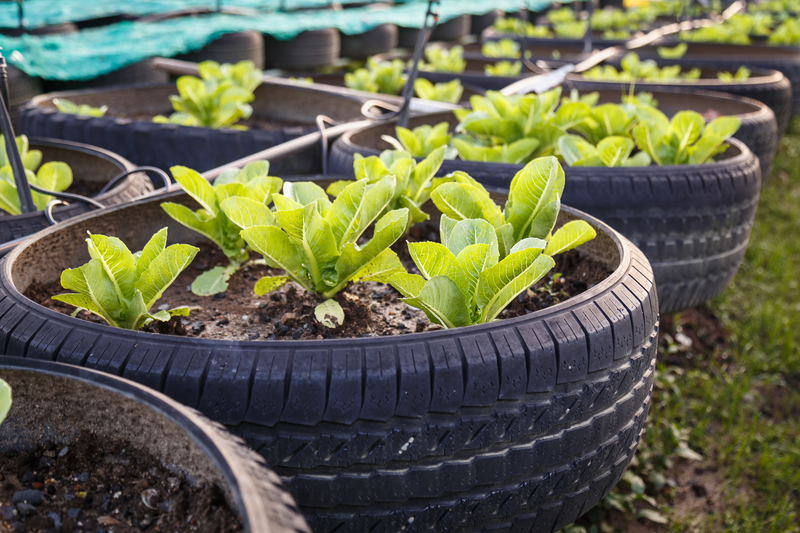Effortless Clutter Removal and Hoarding Cleanup for a Fresh Start
Are you feeling overwhelmed by clutter? Do overflowing cabinets, packed garages, or rooms filled with unused items make your home feel more like a storage locker than a living space? If you're ready to reclaim your life and environment, effortless clutter removal and hoarding cleanup can help you create a fresh, revitalized beginning. Let's explore how these processes work, why they matter, and how you can make your path to a clutter-free home easy and effective.

Understanding Clutter and Hoarding: What's the Difference?
It's important to distinguish between everyday clutter and hoarding. Clutter refers to an accumulation of items that aren't needed or used, creating disorganization. Hoarding, on the other hand, is a recognized mental health disorder characterized by the persistent difficulty in discarding or parting with items, regardless of their actual value. While anyone can struggle with clutter, hoarding requires a more tailored, compassionate approach.
Common Types of Clutter:
- Papers: Bills, magazines, receipts, and old paperwork.
- Clothing: Outgrown apparel, worn-out shoes, unused accessories.
- Kitchenware: Duplicates of pans, utensils, and gadgets.
- Toys and hobbies: Games, crafting materials, unfinished projects.
- Sentimental items: Gifts, souvenirs, family heirlooms.
When clutter accumulates, it can lead to stress, anxiety, and even health hazards. Hoarding situations are more severe, often impacting personal safety, social relationships, and daily function. Recognizing these differences ensures the right solutions are applied for each unique scenario.
Why Removing Clutter and Tackling Hoarding Matters
- Health & Safety: Clutter contributes to dust, mold, and trip hazards, while hoarding may block exits, create fire risks, or invite pests.
- Mental Well-being: An organized environment can significantly reduce stress, anxiety, and feelings of overwhelm.
- Improved Productivity: A clean, organized space makes it easier to focus and be productive.
- Increased Home Value: Decluttering can boost your property's value and appeal to potential buyers.
- Social Benefits: You'll feel more comfortable inviting friends and family into your home.
Taking the first step toward a fresh start may feel daunting, but with the right strategies, you can achieve effortless clutter removal and create lasting change.
Effortless Clutter Removal: Step-by-Step Guide
1. Set Clear Goals
Begin with a vision of your ideal space. Ask yourself:
- Which rooms or areas need decluttering?
- What do you want to use the space for?
- How much time can you commit to this project?
*Write down your answers,* as this will help keep you motivated and focused.
2. Sort and Categorize
Break the process down by handling one area at a time. Use the popular "Four-Box Method":
- Keep: Items you use regularly and love.
- Donate: Usable items that could benefit others.
- Recycle: Paper, plastics, metals, and electronics.
- Trash: Broken or unusable items.
3. The Power of Minimalism
Minimalism doesn't mean living with nothing--it means keeping only what adds value to your life. Consider:
- Ask: "Have I used this in the past year?"
- "Does this make me happy?"
- "Would I buy it again today?"
4. Organize and Assign Spaces
Once you've decided what to keep, organize items by category and assign designated spots for each. Use storage containers, shelving, or labels to stay organized. Clear surfaces and labeled bins help maintain order effortlessly.
5. Establish Maintenance Habits
Clutter can return if left unchecked. Dedicate 10-15 minutes each day to tidying up. Regularly review your belongings to keep your space clutter-free for the long term.
Hoarding Cleanup: Approaching with Compassion and Care
Hoarding is a deeply personal struggle, often linked to trauma or mental illness. Approaching a hoarding cleanup requires sensitivity, patience, and often, professional guidance.
Recognizing Signs of Hoarding Disorder
- Difficulty parting with even low-value items
- Extreme distress at the thought of discarding possessions
- Living spaces rendered unusable by clutter
- Social withdrawal or shame surrounding the home environment
- Unsafe conditions, including blocked exits or unhygienic living areas
How to Conduct a Safe and Effective Hoarding Cleanup
- Seek Professional Help
Hoarding disorder often requires intervention from therapists, social workers, or specialized cleanup teams. Professionals can provide emotional support and practical solutions. - Respect and Involve the Individual
*Never clean out a hoarder's possessions without their involvement and consent.* Build trust through open communication and empathy. - Create an Action Plan
Identify safety hazards first (blocked exits, fire risks, pest infestations). Next, prioritize rooms crucial for daily living, like kitchens and bathrooms. - Sort Items Gradually
Break the process into small, manageable steps. Use a non-judgmental approach and allow time for decision-making. - Provide Ongoing Support
Connect the person with counseling or local support groups to address the underlying causes and prevent relapse.
Benefits of Professional Clutter Removal and Hoarding Cleanup Services
While many people can manage clutter on their own, there are situations where hiring professional decluttering services makes the process virtually effortless. Here's why:
- Speed and Efficiency: Experienced teams quickly sort, remove, and dispose of unwanted items.
- Proper Disposal: Professionals ensure recycling, donating, and trashing are done responsibly.
- Safety: They're trained to handle mold, pests, and hazardous materials present in severe hoarding situations.
- Confidentiality: Reputable services protect your privacy throughout the process.
- Emotional Support: Compassionate specialists understand the sensitive nature of decluttering and hoarding cleanup.
Hiring help means you won't have to lift a finger. Let experts handle the heavy lifting, sorting, and cleaning so you can focus on starting fresh.
Simple Tips for Maintaining a Clutter-Free Home
- Adopt the One-In, One-Out Rule: For every new item you bring home, let go of one.
- Schedule Regular Decluttering Sessions: Monthly check-ins prevent rooms from becoming overwhelmed again.
- Digitize Paperwork: Scan important documents and shred the rest to clear space.
- Get the Whole Family Involved: Make organizing a shared responsibility so clutter doesn't accumulate unnoticed.
- Mindful Shopping: Buy only what you need and avoid impulse purchases.
The Emotional Impact of a Fresh Start
Clearing out the old creates room for the new--not just physically, but emotionally. Letting go of clutter often lifts a burden you may not even realize you're carrying. Expect to feel:
- More energy and motivation
- Reduced stress and anxiety
- Increased sense of control, accomplishment, and freedom
- Improved relationships with family or roommates
- Pride in your home and environment
If you or a loved one struggles with hoarding, know that change is possible. Hoarding cleanups, handled with care and compassion, restore homes and hope.

Getting Started: Your Pathway to an Organized Life
Ask Yourself:
- What do I want my space to look and feel like?
- How does clutter or hoarding affect my daily life and happiness?
- Who can help support me during the process?
Quick Start Checklist
- Schedule time to declutter or consult with experts
- Gather boxes, bags, and cleaning supplies
- Enlist help from friends, family, or professionals
- Set realistic, achievable goals
- Remember to celebrate each step - progress matters!
Conclusion: Transform Your Space, Transform Your Life
Whether you're dealing with simple clutter or more severe hoarding, clearing your environment paves the way for renewed well-being. Effortless clutter removal and hoarding cleanup are not just about getting rid of stuff--they're about making space for what truly matters. Enjoy how much lighter, calmer, and happier you feel when you live in a space that reflects your best self.
Ready for your fresh start? Embrace the transformation and step into a new chapter of clarity, organization, and peace. Remember, help is available, and you never have to tackle clutter or hoarding cleanup alone.
Recommended Resources
- National Institute of Mental Health: Hoarding Disorder
- HelpGuide: Decluttering Tips
- Psychology Today: Hoarding Disorder Resources
If clearing clutter or hoarding cleanup feels overwhelming, consider reaching out to a local professional clutter removal service for personalized support and guidance. Your fresh start awaits!
